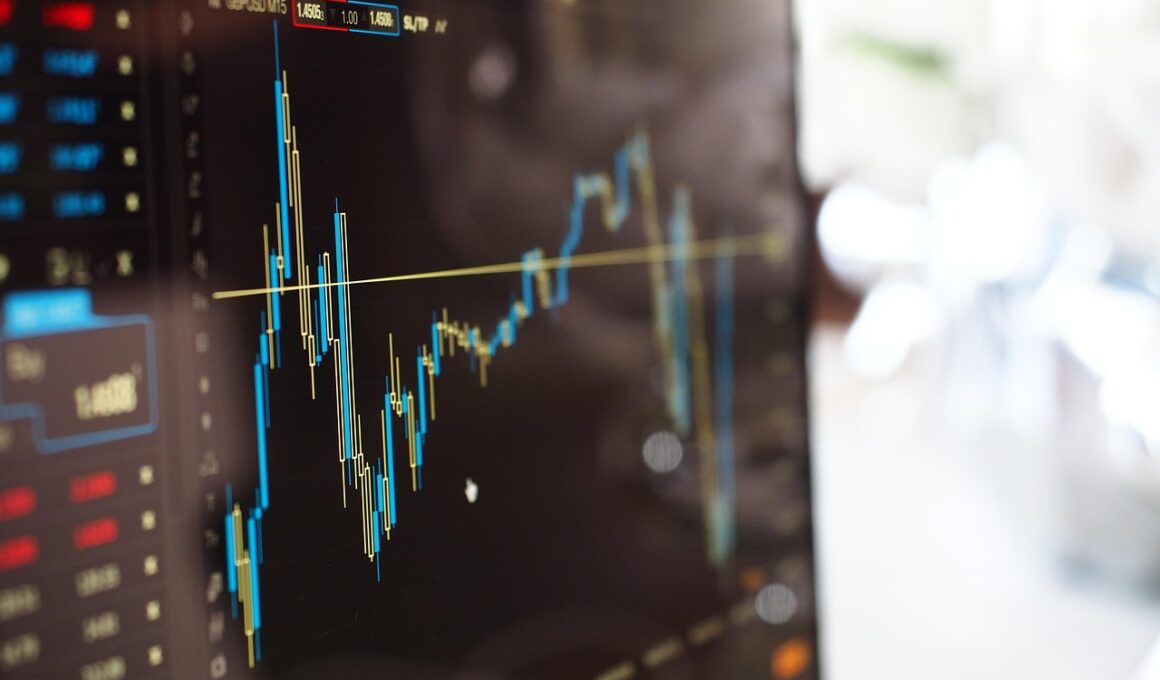The Impact of Latency on High-Frequency Trading Performance
High-frequency trading (HFT) is a powerful and complex activity in the global markets. It relies on sophisticated algorithms to execute a large number of orders at extremely high speeds. A key component that influences the effectiveness of HFT is latency, which refers to the time delay in the transmission of data. When latency is minimized, HFT firms are better positioned to capitalize on fleeting opportunities in financial markets. Traders employing HFT strategies constantly seek out the lowest latency connections to gain an advantage over their competitors. Significant factors affecting latency include network infrastructure, hardware performance, and software efficiency. Firms invest heavily in technology solutions that optimize trading systems for speed. By using proximity hosting in data centers located close to exchanges, these firms can reduce lag times. Moreover, ultra-fast algorithms are essential for rapid decision-making processes. Enhancing performance through streamlined architecture is crucial, enabling firms to maintain a competitive edge. Thus, understanding the impact of latency ultimately leads to improved trading outcomes, allowing participants to maximize their profitability in a highly competitive environment.
Understanding Latency Types
Latency in high-frequency trading is categorized into several types, each impacting trading performance differently. The most common types are network latency, processing latency, and market latency. Network latency refers to delays in data transmission between trading platforms and exchanges, influenced by geographic distance and infrastructure quality. Processing latency encompasses delays in order execution and market data analysis. It can be affected by the efficiency of trading algorithms and the hardware used. Market latency arises from the time it takes for market information to be disseminated and absorbed by trading systems. Understanding these types allows traders to pinpoint specific areas for improvement. High-frequency traders strive to identify and minimize each latency type to enhance their responsiveness to market changes. This focus on latency reduction can significantly affect profitability. Interconnectivity with co-located servers—facilitating faster data access—is one strategy. Additionally, employing real-time data feeds can mitigate market latency, providing traders with the most current information available. Collectively, effective latency management is fundamental for maximizing trading performance and ensuring success in the fast-paced financial environment.
When assessing the impact of latency on high-frequency trading, the choice of technology plays a pivotal role in overall performance. Traders employ a combination of advanced software and hardware to minimize latency effectively. Optimizing code to reduce processing time is essential, as even milliseconds can mean the difference between a profitable trade and a loss. High-frequency trading firms rely on powerful servers and specialized network equipment designed for rapid data processing. Additionally, leveraging Field-Programmable Gate Arrays (FPGAs) enhances execution speed by processing transactions closer to the trading infrastructure. This technology dramatically reduces latency, allowing for split-second decisions. Furthermore, firms often use direct market access (DMA) solutions to connect to exchanges more quickly. The combination of reduced latency and efficient execution directly correlates with higher profit margins. Therefore, innovative solutions that decrease latency not only enhance trading strategies but also improve competitive positioning in the marketplace. As the financial landscape evolves, the emphasis on reducing latency will only intensify among high-frequency traders seeking an edge. Consequently, technology investment continues to be a crucial factor in shaping trading strategies.
Risk management in high-frequency trading also hinges on an understanding of latency. Lags in data transmission can lead to erroneous trades, exacerbating financial exposure and loss. Effective risk management strategies must integrate latency considerations, instilling robust safeguards. Traders utilize real-time monitoring systems to detect fluctuations in latency and enact contingency plans. For instance, if latency surges unexpectedly, algorithms may halt trading activity to minimize potential losses—a common practice among prudent firms. Additionally, traders engage in rigorous backtesting of new strategies, incorporating latency variables to assess potential performance under varying conditions. Understanding historical latency patterns is crucial to forecasting future trading behavior and adjusting strategies accordingly. As trade execution speeds increase, so too must the methodologies for risk assessment. High-frequency traders must foster a culture of continuous improvement, where regular evaluations of technology and strategy take center stage. This proactive approach not only reduces risks but also enhances overall trading performance. Through disciplined risk management practices that account for latency, HFT firms can navigate volatile markets more effectively, securing a competitive edge in challenging environments.
The Future of Latency in High-Frequency Trading
Looking ahead, the significance of latency in high-frequency trading is expected to increase as markets evolve. New trading venues are emerging, each with unique latency profiles. Therefore, adapting to different environments will be essential for HFT participants to maintain their competitive advantage. The development of new technologies, including quantum computing and low-latency networks, promises to further revolutionize speed and efficiency in trading. Firms that embrace these advancements will be better positioned to achieve superior performance, as they can process vast amounts of information more quickly than ever before. Moreover, regulatory changes may also impact latency considerations, prompting traders to rethink their strategies in response. Keeping abreast of technological advancements is crucial for firms aiming to thrive. Collaborations with technology providers can result in breakthroughs in latency management, aligning strategies with the latest developments. Consequently, the landscape of high-frequency trading will be defined by those who prioritize speed and efficiency. Being well-informed and adaptable will enable firms to capitalize on the inherent advantages that minimal latency offers in a constantly shifting market.
Finally, the relationship between latency and market dynamics serves as a pivotal topic in the field of high-frequency trading. Understanding how latency influences market behavior is essential for traders to refine their strategies effectively. Researching the interplay between latency and liquidity reveals insights into how minimized delays can create more efficient market structures. As liquidity providers compete, the overall market quality improves, fostering greater resilience. One challenge traders face is balancing the need for speed with the potential for increased volatility. Reducing latency can contribute to sharper price movements, which may create unexpected conditions. High-frequency traders must be equipped to navigate this landscape by continuously reassessing their risk exposure. Furthermore, education and training regarding latency implications are indispensable for achieving success within the sector. Insufficient understanding can lead to significant losses and missed opportunities. By emphasizing latency in their trading approach, firms can enhance their ability to respond swiftly to market fluctuations and anticipate future trends. Therefore, crafting a comprehensive strategy centered around latency awareness is critical for high-frequency trading success.
In summary, latency significantly impacts high-frequency trading performance across various dimensions. Traders must focus on optimizing technology, comprehending risk management, and adapting to market dynamics influenced by latency. By being proactive and leveraging innovative solutions, firms can enhance their trading execution while minimizing potential downsides. Simplifying processes through technology integration allows traders to identify latency bottlenecks effectively. Continuous learning and improvement in this area will contribute to superior trading outcomes. Thus, HFT firms must remain vigilant in staying updated on technological advancements and regulatory changes. This will better position them to navigate the complexities of modern markets. The drive for latency reduction is a journey that requires ongoing commitment. Ultimately, firms that recognize the value of latency will emerge stronger amid evolving market conditions. It is essential to implement and iterate on latency-conscious strategies that align with trading objectives. High-frequency trading success will increasingly hinge on the ability to eliminate barriers that hinder quick execution. Ongoing engagement with this critical aspect of trading will ensure that firms remain competitive and adaptable in a rapidly changing environment.
To conclude, the impact of latency on high-frequency trading cannot be overstated. As a critical component of trading systems, latency management will continue to be at the forefront of discussions regarding market efficiency. The future of high-frequency trading will be shaped by innovations in technology and the adaptability of firms to respond to changing market conditions. By focusing on minimizing latency and leveraging advanced algorithms, traders can unlock new opportunities for profit maximization. Engaging with emerging technologies and strategic collaborations will enable firms to keep pace with the evolving demands of the market. In this ever-competitive landscape, success will ultimately depend on the ability to effectively navigate and reduce latency challenges. Thus, organizations must invest in research and development to foster a culture of innovation. The dynamically changing nature of financial markets makes a commitment to latency optimization not just beneficial, but essential. With continued focus and dedication, the landscape of high-frequency trading has the potential to become even more sophisticated and efficient. The journey towards mastering latency is a commitment that high-frequency traders must embrace wholeheartedly.


